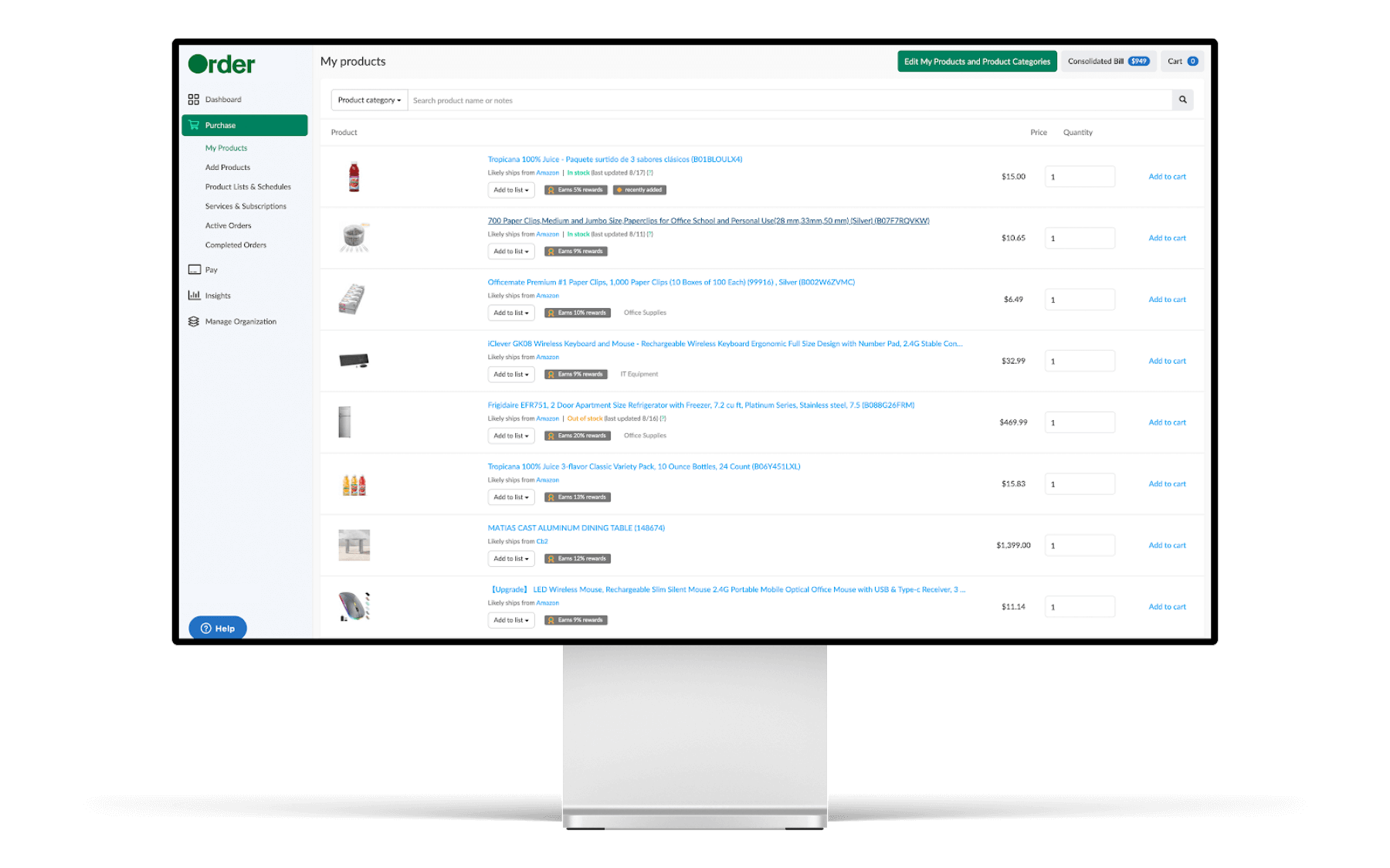What Is the P2P Cycle? And Best-Practices for Businesses.

Procure-to-pay (P2P) is the process an organization uses to source, negotiate, purchase and pay for goods and services. A powerful, effective procure-to-pay (P2P) cycle is critical for your business.
As Forbes Councils Member Peter Nesbitt notes, the way companies spend money has changed dramatically over the past several years. Businesses no longer rely on a top-down model for purchasing and spending. As a result, P2P cycles and technology have changed dramatically.
A well-crafted procurement process is an enablement tool for teams. It reduces friction in the supply chain and speeds the delivery of products to market. But the traditional procurement model—driven by manual processes and limited visibility—is no longer sufficient for driving growth.
Download the free ebook: The Procurement Strategy Playbook
Using technology to optimize procure-to-pay (P2P)
Thanks to next-generation P2P technology, meeting your financial goals and tracking your spending at scale are easier. These systems enable classification and analysis capabilities critical to managing business spending and reducing costs. They reduce value-sapping maverick spending, improve your functionality, and ensure your accounts payable team is focused on the right tasks to create value.
We’ll discuss:
- The components that make up the procure-to-pay process
- Best practices for increasing operational efficiency
- How to implement next-generation technology
What are the steps in the procure-to-pay cycle?
The procure-to-pay process includes all the steps necessary to purchase materials and services for your organization. It begins with a purchase request and follows a predictable (and trackable) path to invoice approval and payment.
The 7 steps of a P2P process:
- Identify needs: In the initial steps of the process, a stakeholder identifies a product or service they need. Depending on the need, they may outline requirements for the procurement department.
- Requisition materials: The stakeholder submits a purchase requisition. Department heads and Finance sign off and approve that requisition so that Finance or Procurement can move forward with the purchase.
- Source the materials: Effective sourcing is critical to ensure that you have a solid supplier who will offer your business the best possible deal on your goods.
- Create a purchase order: Upon approval of the purchase and sourcing, the Purchasing team or stakeholder submits a purchase order to begin the transaction. This is routed to the supplier for fulfillment.
- Receive the goods: Once fulfillment is complete, accounting conducts the three-way matching process to ensure the ordered goods and actual deliveries align. The financial team will ensure that no discrepancies exist that could cause problems with the process.
- Approve the invoice: Once reconciled, Procurement teams approve the vendor invoice for AP processing.
- Pay the vendor: The vendor gets paid for their services based on the terms of the contract. Post-payment, the accounting team may implement contract management and analysis. This is part of the supplier lifecycle management process.
Best practices for your P2P cycle
Rather than just checking the boxes, routing the request, and moving forward without attention to detail, take the time to optimize your P2P process. Ensure the best tools and processes—namely, procure-to-pay software—are in place to manage your P2P cycle effectively.
The best P2P management practices usually include:
- A documented intake or requisition process
- An approval process with a standard list of approvers
- Budgetary review through finance or procurement
- A strategic sourcing program to identify the best suppliers
- Negotiating and contract prerequisites for each purchase
- Purchase order review and shipment reconciliation process
- Centralized vendor payment and contract management
Procure-to-pay software increases the effectiveness of a well-executed purchasing process. It simplifies the overwhelming process of managing the sourcing, purchase, and payment of goods and services.
Using software is the best way to create a scalable solution that grows along with your company. Even better, P2P software often results in net savings well above the investment in automation.
P2P software automates many repetitive tasks that bog down your purchase-to-pay process, including:
- Vendor sourcing and selection
- Purchase requisition and purchase order approvals
- Invoice approval and invoice processing
5 goals to strive for in your P2P cycle
These best practices improve the procure-to-pay process flow and realize better cost savings for your organization. Identifying your desired outcomes of a program—whether its streamlining operations, increasing cost savings, creating scalability, or improving inventory management—helps you make decisions about your program.
1. Increase visibility in your purchasing process
Visibility is critical in tracking the success of your procure-to-pay cycle. It enables your stakeholders to track each purchase through the process. It also creates an audit trail and a source for data reporting.
Order.co provides real-time spend data, coded down the line, product, user, or location level. This data helps your finance team make critical decisions about your purchases. This next-generation visibility—which offers insight into the latest changes in your inventory, availability, and purchases—helps your finance team and other decision-makers see and adjust to changes in your procurement function. It ensures that you’re buying what you need, with competitive pricing and high levels of compliance.
2. Automate the accounts payable department
Automation has become increasingly common across many industries, and the procure-to-pay cycle is no exception. Automating your accounts payable function can result in as much as a 60% increase in productivity and an 83% reduction in purchase order processing time.
Order.co automates many of the steps involved in the P2P cycle. It also helps organizations implement strategic sourcing to ensure the best sourcing for high-volume or high-cost goods. This automated sourcing has helped many clients save an average of 8% on their procurement costs.
3. Use a dynamic system to manage the payment process
Vendor payments are a critical part of your P2P process. Optimizing the payment process with the right workflow reduces payment errors, eliminates time-consuming research and corrections, and ensures payments align with business needs and cash flow.
A dynamic procure-to-pay solution allows businesses to manage payments according to changing business considerations, consolidate payments into a single invoice, and reduce the time spent handling the accounts payable process.
4. Optimize ordering and logistics
Transparency is crucial to maintain effective ordering processes. It ensures you have the right items coming in at the right times.
An effective P2P process helps you optimize your ordering across your organization. It also provides insights into standard pricing, total cost, and other critical metrics for maintaining inventory control without sacrificing cost efficiency.
Order.co allows organizations to order the goods they need across departments or locations, providing continuity and cost efficiency.
5. Coordinate and manage delivery schedules.
Monitoring delivery schedules through an automated notification system helps you better plan inventory receipt and distribution. It also increases supply chain resiliency, allowing the business to respond to changes in availability, delivery status, and quantity without disruption to normal operations.
How technology software enables P2P
Maintaining an effective procure-to-pay cycle with a manual process becomes more complex as the business grows. By implementing technology, you can automate repetitive tasks and reduce the errors associated with processing purchases and tracking deliveries on a spreadsheet.
Using P2P software, businesses can automate much of the process, including:
- Purchase requisition and purchase order creation
- Purchase approvals
- Vendor sourcing and e-procurement
- Delivery tracking and reconciliation
- Three-way matching
- Invoice coding, processing, and approval
- Supplier lifecycle management
Using software to drive the procure-to-pay process also gives your business access to powerful analytics and robust reporting tools that improve the procurement function, save money, and increase efficiency.
Order.co streamlines your P2P cycle
Digital transformation has revolutionized the P2P cycle. With a procure-to-pay solution like Order.co, businesses have the power to implement total spend management, eliminate inefficiencies, and protect the bottom line—all while allowing locations to quickly and easily order the supplies they need. Schedule a demo of Order.co today to get started.

Get started
Schedule a demo to see how Order.co can simplify buying for your business.
"*" indicates required fields

